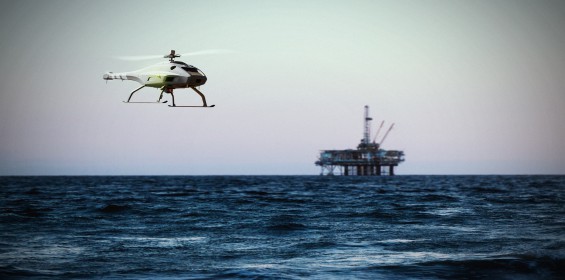Improving cost-efficiency with unmanned aerial systems in oil and gas exploration
Published: 06 February, 2023
Richard Hjelmberg, vice president business development for UMS Skeldar discusses whether the use of drones in the offshore oil & gas industry can overcome future challenges.
The fallout of the pandemic and subsequent political tensions in Europe have been hard on the global economy. With finances being tightly monitored and safety concerns facing personnel, the utilisation of technology in solving industrial problems has never been more beneficial. The oil and gas sector faces increased security risks with the war in the Ukraine being a key contributor. With rising oil prices, governments and industry looking to reduce costs and conserve human capital should strongly consider investing in Unmanned Aerial Systems (UAS) technology.
Where human capabilities fall short, sophisticated engineering rises to the challenge. Pipelines connect countries and transcend international borders. High-level security and inspection have never been more critical to reducing oil shortages that have driven up the cost of living in the most advanced economies. Hindered by legislation but empowered by practicality, UASs are being widely adopted, ready to be applied to offshore inspections in which they were built to thrive.
A Strategy for Cost-Efficiency
Unmanned Aerial Systems, also known as drones, have efficient and reliable aerial imaging capabilities to safely identify critical infrastructure defects and methane gas leaks. They are equipped to carry out unmanned inspections over dangerous terrains. Given that skilled professionals usually demand a premium on such missions, there is an opportunity for the industry to streamline its budgets in line with shortages being faced due to ongoing conflict.
Vertical Take-Off and Landing (VTOL) UASs can carry out offshore oil and gas inspections in a timely and cost-effective way without the need for additional supporting infrastructure such as a runway. Preventative maintenance, which IBM defines as “the act of performing regularly scheduled maintenance activities to help prevent unexpected failures in the future” is another area where UASs thrive. Since UASs like UMS SKELDAR’s are incredibly fuel efficient compared to manned helicopters, they can be deployed to carry out inspections on a regular basis without high risks to human life and unprecedented costs.
VTOL UAS’s come with the added benefit of being able to be deployed within minutes and transmit data in real time to inspection crews; the end result being to ultimately reduce infrastructure downtimes.
Damages and leaks to critical infrastructure have adverse effects on the surrounding environments. They can lead to the poisoning of local land and water bodies that are often at the centre of the local economy. If these spillages and leaks go unnoticed and expose the surrounding environment to toxic liquids and gasses, they can incur losses for oil and gas companies that have to ensure large-scale clean ups of oil pollution for example. UASs have the potential to eliminate the impact of these losses thanks to early detection.
Navigating and Preventing Perilous Conditions
LiDAR, also known as Light Detection and Ranging, is an example of an advanced sensor that can help to detect methane leaks. It is one way that the industry can prevent the scenario where personnel are endangered by safety risks that oil exploration is known for. Explosions, spillages, gas leakages and pipeline sabotage in communities are just a few of the dangerous circumstances that manned crews are exposed to.
Ensuring that the infrastructure and facilities are safe requires regular monitoring, inspections, and maintenance. Such inspections are fraught with danger for manned crews who are unable to attend frequently.
Unmanned rotary-wing UASs can fly for close to double the flight time compared to manned helicopters, and are able to access these areas with relative ease but without exposing crew to the associated hazards. This removes risk to employee safety and consequently reduces medical expenses and lost work hours due to injury.
Another key advantage that comes with the long endurance of UAS’s is being able to monitor suspicious activities as well as check the condition of hard-to-reach oil fields or cross-border pipelines. With this in mind, it becomes easier to predict that the use of UASs in the oil and gas industry is only going to increase in the future, especially when taking the comparatively low hourly operating costs compared to manned aircraft into consideration.
Predicting the Future
After years of advocacy by UAS manufacturers, there is greater general awareness around what unmanned aircraft can provide to an ever-broadening variety of sectors and organisations. However, people in civilian sectors like the oil and gas industry need to be made more aware of the roles and therefore potential purposes of UASs. Education is key to the adoption of UASs in civilian sectors.
To really move things forward, the regulations behind the scenes rightly controlling what is possible also need to adjust to the technology advancements that have been made in recent times. Being able to fly BVLOS over land and sea is pivotal to what is possible in the future. Many oilfields and pipelines are not only vast in size, but also cross borders. Therefore, regulations should adapt to allow oil and gas organisations to perform monitoring operations. Although significant work is being done in this area, advancements as well as studies are still required to form a legislative framework that allows for operations with unmanned aircraft to take place.
https://twitter.com/umsskeldar
https://www.linkedin.com/company/ums-skeldar/






